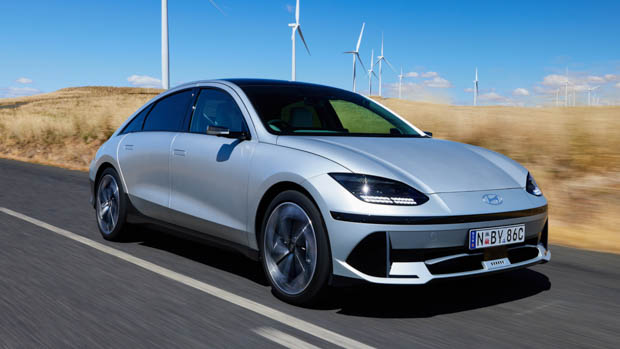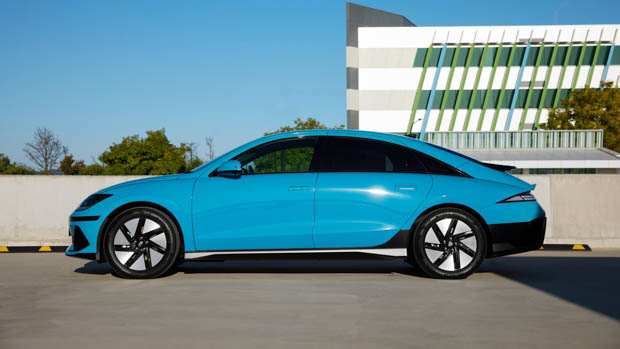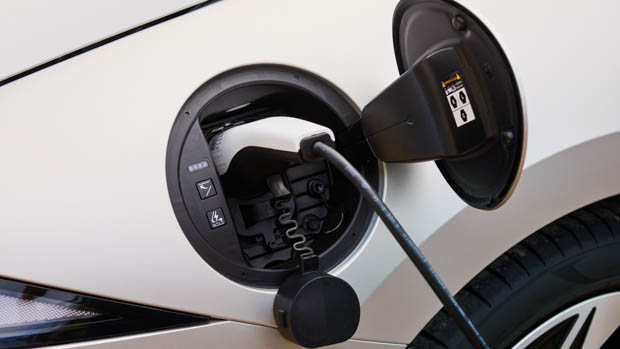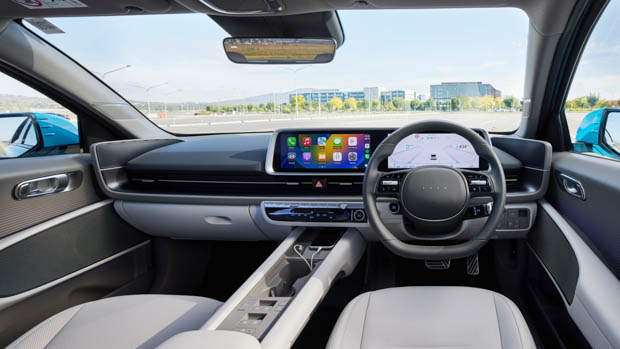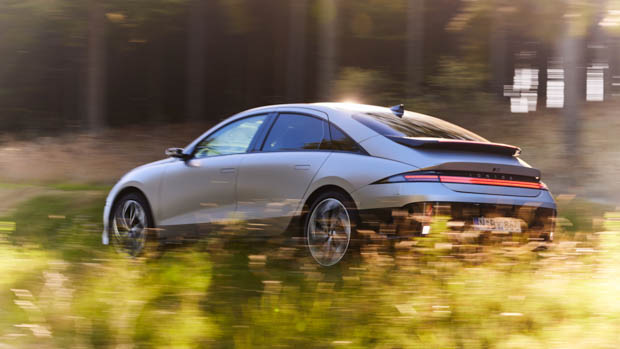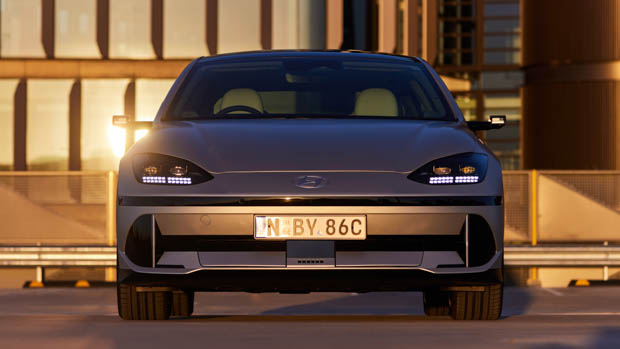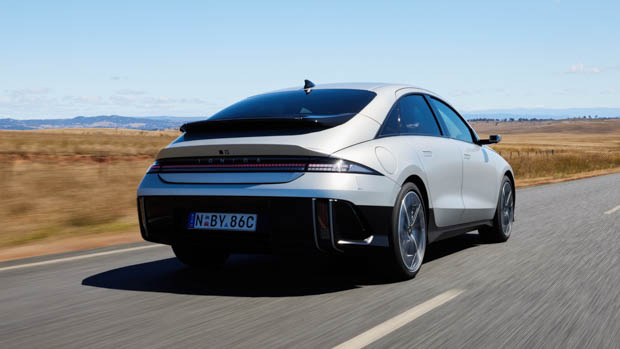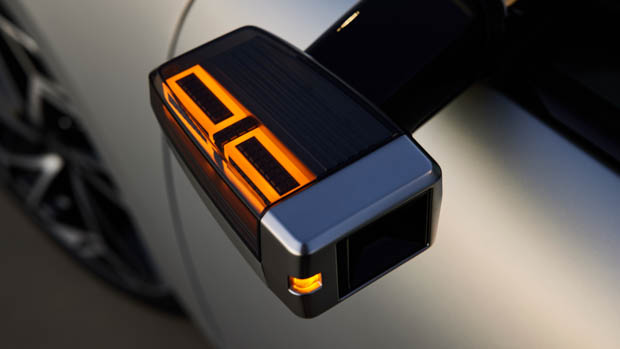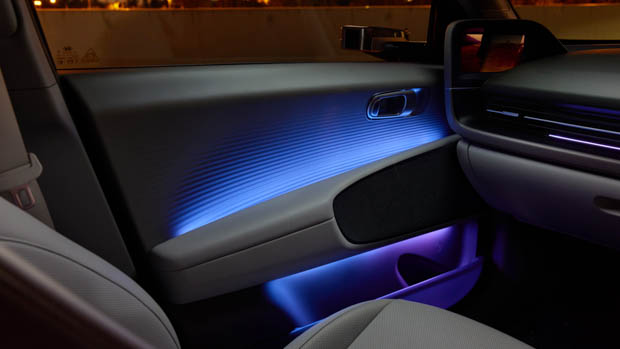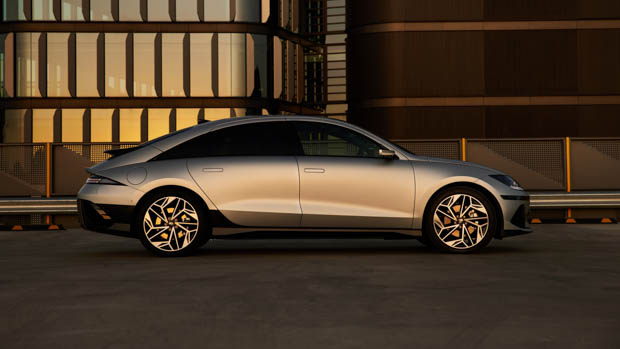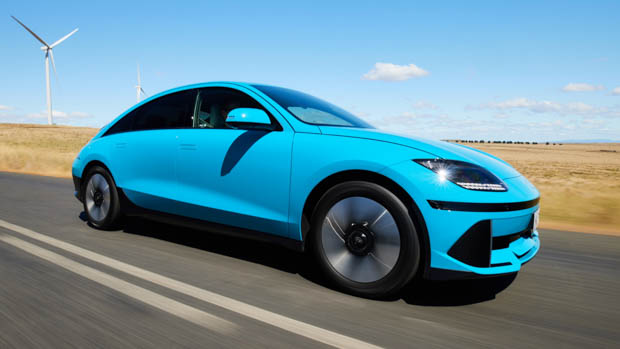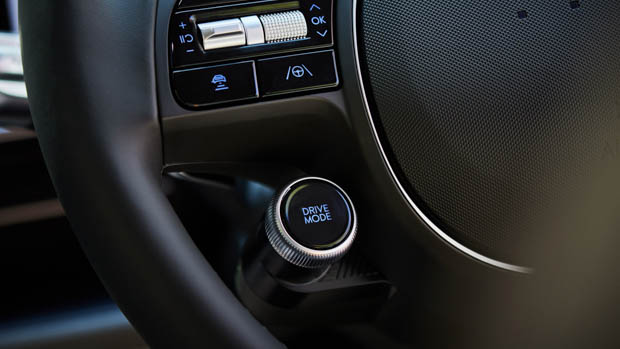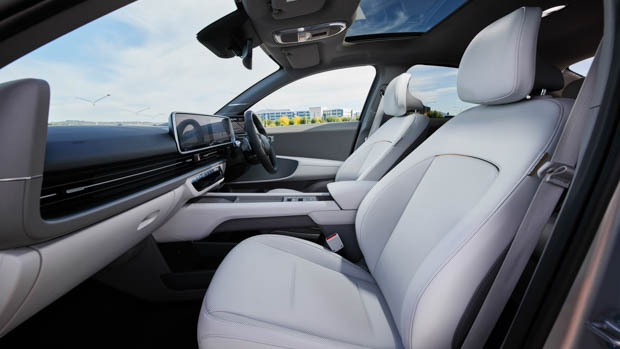-
Car Reviews
- All reviews
- Midsize SUVs
- Small cars
- Utes
- Small SUVs
- Large SUVs
- Large cars
- Sports SUVs
- Sports cars
- Vans
Latest reviews
- Car News
-
Car Comparisons
Latest comparisons
- Chasing Deals
Hyundai Australia’s R&D team evaluated which suspension setup would work best for the Ioniq 6 locally
Hyundai’s sleek Ioniq 6 electric sedan is getting closer to an on-sale date locally and the ride and handling package of the new electric model had plenty of input from Australia, even from the model’s early R&D stages.
The result is that the Ioniq 6 arrives as “the slightly more dynamic car in the Ioniq range” and which now sits alongside the Ioniq 5.
“The HMCA product development team evaluated a choice of chassis tunes locally and selected the optimal tune for our market,” says Hyundai Australia’s product planning and development manager, Tim Rodgers.
Hyundai Australia was involved early in the development of the Ioniq 6, “providing HQ with input to achieve the ‘flavour’ of the tune required for the Australian market,” Rodgers says.
While the Hyundai Ioniq 6 does not use a bespoke chassis tune developed for Australia, Rodgers and his team struck an “optimal tune” for Australia through a selection process that evaluated different tunings in order to arrive at settings that would work best for local road conditions.
“The R&D team responsible for Ioniq 6 intimately understood the tuning concept that needed to be applied to the car, which made our job extremely easy.
Hyundai Australia says its local “testing and scoring” program has been honed over many years and “comprises a wide spectrum of challenging local city, highway, country and gravel roads”.
Indeed, Chasing Cars spotted HMCA undergoing Ioniq 6 suspension and steering testing on local Sydney roads back in August last year.
On its on-road character, Rodgers says that the Ioniq 6 is “a bit more engaging, dynamic and responsive” than the Ioniq 5 that’s skewed more towards being “comfortable and easy to drive.”
“There’s a greater focus on the driver and front passenger when compared to the Ioniq 5.”
The Ioniq 6 is already on sale in Australia, with the first 300 cars to arrive in May 2023.
Three variants of Ioniq 6 will be available at launch: Dynamiq, Techniq and Epiq. The entry-level Ioniq 6 Dynamiq comes standard with an extensive list of features that includes:
Stepping up to the Techniq model, owners will receive the same specification as the Dynamic, plus:
Finally, the Epiq adds to this specification with:
In terms of options, the Hyundai Ioniq 6 with matte paint will cost $1000 extra across the three variants.
The Hyundai Ioniq 6 in all variants is powered by a 697-volt, 77.4kWh lithium-ion battery pack that feeds the onboard electric motors.
In the entry-level Dynamiq, a single, rear-mounted electric motor produces 168kW of power and 350Nm of torque.
The mid- and high-spec Ioniq 6 models – Techniq and Epiq – are powered by an electric dual-motor setup comprising a 74kW/255Nm front motor and a 165kW/350Nm rear motor. Total outputs are therefore 239kW/605Nm.
The dual-motor versions come with a performance claim of 5.1sec for 0-100km/h.
How long will it take to charge the new Ioniq 6?
Hyundai says that using 50kW DC fast charging, the Ioniq 6 can be charged from 10-80 percent in a little over one hour, while charging at home using a typical 7kW setup will take around 11 and a half hours.
The Hyundai Ioniq 6 was tested during 2022 by Australian automotive safety authority ANCAP and received a five-star safety rating.
The Ioniq 6 scored very well in adult occupant protection (97 percent), child occupant protection (88 percent) and safety assistance (90 percent).
As standard, all Ioniq 6s are fitted with the following passive and active safety features as part of the Smartsense safety suite:
The Ioniq 6 is surprisingly sustainable and features eco-processed leather, a bio-plastic dashboard, bio PET fabric for the headlining, natural bio paints, recycled fishing net for the carpet and black carbon pigment to use as paint for the exterior cladding of the Ioniq 6.
The Ioniq 6, in all-wheel drive specification, uses a disconnector actuator system on the front axle to automatically engage and disengage drive to the front wheels, reducing drag losses to improve electric efficiency.
Hyundai’s new electric car will also be fitted with V2L (vehicle-to-load) functions, meaning that you can power external sources such as an electric scooter, camping equipment and more right from the car’s battery pack. This function will also work inside, where occupants can power electrical devices on the move.
All prices listed are before on-road costs.
Latest news
About Chasing cars
Chasing Cars reviews are 100% independent.
Because we are powered by Budget Direct Insurance, we don’t receive advertising or sales revenue from car manufacturers.
We’re truly independent – giving you Australia’s best car reviews.
